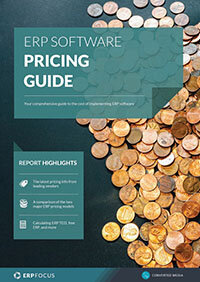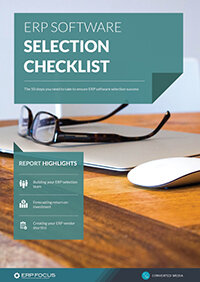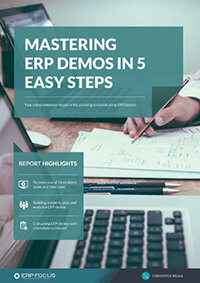Why Multi-Tenant SaaS ERP is Superior to Traditional Systems
CIOs eager to take advantage of the cloud tend to hear a lot about ERP cloud computing from SaaS ERP vendors trying to sell them their software. But often a really techie term multi-tenancy becomes a part of the conversation even though it is not actually necessary. Sellers often promise to provide multi-tenancy or single-tenancy in their sales pitches to potential clients. But it’s unfortunate that the sellers are not at all clear about the term “multi-tenancy” and what they mean by it.
Though multi-tenancy is fundamental to Software-as-a-Service, it is often generalized, manipulated, or excluded by the sales persons for their benefits. In fact, the truth is that SaaS has become ubiquitous in the past several years because of its multi-tenancy. An ERP software application that is not multi-tenant is simply hosted software and no effort of the seller in trying to present it as something different should be taken seriously.
However, a little use of common sense should be utilized when examining claims of multi-tenant software from a traditional software company. The fact is that there are a number of SaaS companies like Salesforce, Workday, Kenexa, Xactly, and many others whose main purpose is to deliver multi-tenant software. Years of experience, market knowledge, and client feedback have turned these companies into reliable multi-tenant solutions.
The reason why multi-tenancy in SaaS ERP is so important is because its core system is where all the benefits of SaaS are derived from. Decreased costs, automatic updates, and collaboration are just a few of the benefits of multi-tenancy:
More Updates/Innovation
The multi-tenant SaaS ERP model is analogous to a residential building where if the management improves its services, all the the residents benefit. So whenever new features and innovations are added to the software, no customer is “left behind”. Moreover, the SaaS providers are free from the shackles of the “update once every several years” policy that seems to plague many traditional ERP vendors. SaaS providers are free to innovate and update their software however often they want.
Lower Cost
As mentioned before, the same version of the software is maintained by the SaaS providers. How can a SaaS provider offer single-tenant versions of the software to lots of users while keeping costs low? It can't. Who will pay for these costs? The customer. That's how multi-tenancy in SaaS ERP keeps customer costs low.
Greater Collaboration
The fact that all customers use the same version of the software allows for a greater sense of community and improved collaboration. Many SaaS ERP providers have very large user communities and forums where users and partners can share tips and ideas. This is not only good for customers but it's also good for the provider since having a dedicated user community can help greatly in word-of-mouth marketing and branding.
Updates Managed by Software Provider
With multi-tenancy, the vendors manage and deliver all software updates, which can be up to several times a year. All the customers are provided with these updates at no extra charge. Thus, customers are relieved from having to implement IT upgrades and they are able to focus on what matters to them - their business.
by Aaron Louis, Head Blogger at ERP Systems HQ
Free white paper

ERP Software Pricing Guide
Get the latest pricing information on over 80 popular ERP systems, and learn how to budget for your ERP project in our free guide

Featured white papers
-

ERP Software Pricing Guide
Get the latest pricing information on over 80 popular ERP systems, and learn how to budget for your ERP project in our free guide
Download -

60-Step ERP Selection Checklist
Get the comprehensive checklist for your ERP selection project
Download -

ERP Demo Guide & Scorecard
Master your ERP demo with 5 easy steps using our free guide (includes demo scorecard)
Download
Related articles
-

The best ERP systems for process manufacturing
Consider these ERP systems when selecting your next process manufacturing ERP
-

CMMC Compliance: What Aerospace and Defense Manufacturers Need to Know
Key insights on CMMC compliance, deadlines, and securing DoD contracts with CMMC 2.0 certificatio...
-

5 ERP pricing definitions you need to understand
Have you mastered the ERP pricing lexicon yet? Getting to grips with these five definitions is a ...

